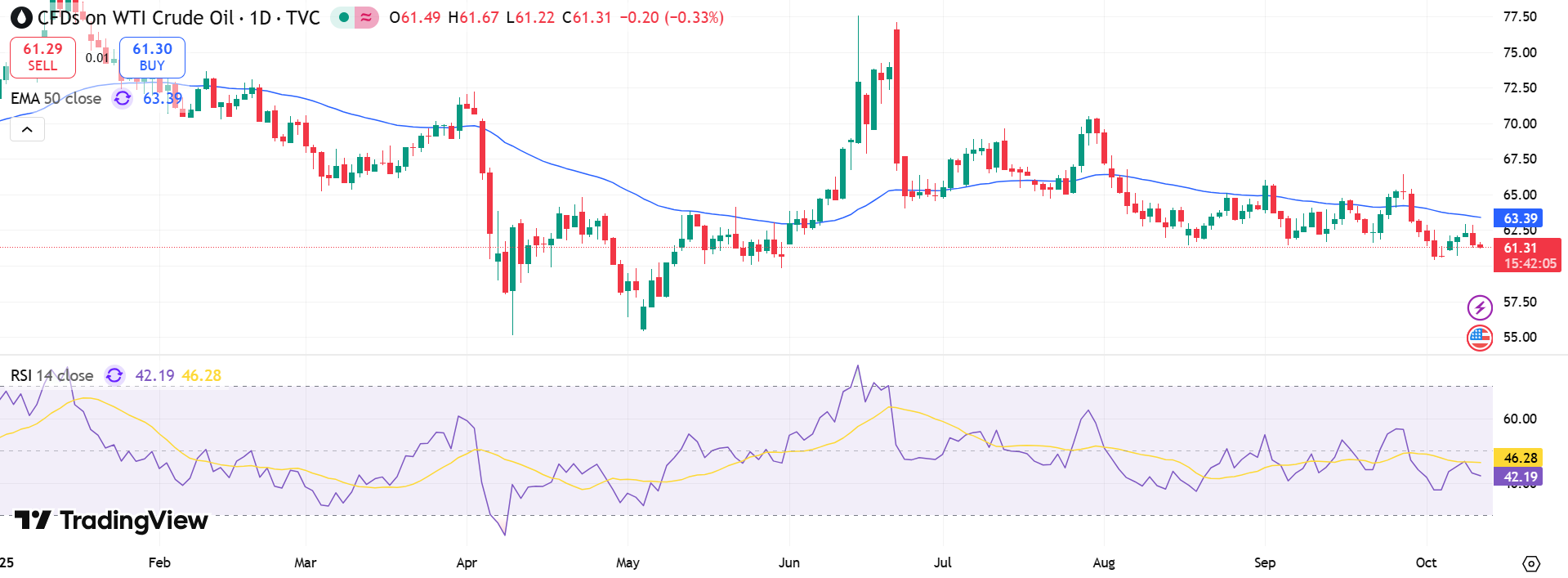Oil prices slipped slightly on Friday, continuing the week’s subdued trend as geopolitical tensions in the Middle East eased. Brent crude fell 7 cents to $65.15 per barrel, while U.S. West Texas Intermediate (WTI) inched down 2 cents to $61.49 as of 03:38 GMT. The modest decline followed Thursday’s 1.6% drop, marking a pause in the risk-driven rally that had gripped markets for months.
The shift came after Israel and Hamas agreed to the first phase of a U.S.-brokered ceasefire, part of a broader plan to end the two-year war in Gaza. The deal includes Israel’s partial withdrawal from Gaza and the release of hostages in exchange for Palestinian prisoners. Analysts say the truce significantly reduces the likelihood of further supply disruptions in the region, which accounts for nearly one-third of global oil shipments.
OPEC+ Output Strategy in Focus
As geopolitical risk fades, attention is turning back to supply fundamentals. OPEC+ recently confirmed a smaller-than-expected increase in production for November, calming fears of a rapid market oversupply. Analysts at BMI noted that while the alliance’s production uptick remains limited, “markets’ expectations for a sharp ramp-up in crude supply have not yet translated into major price declines.”
ANZ senior strategist Daniel Hynes added that with the Gaza ceasefire now in place, traders are shifting focus toward the impending oil surplus anticipated in early 2026 as OPEC continues to unwind earlier production cuts.
Key developments shaping sentiment:
- OPEC+ production adjustments remain moderate.
- Brent and WTI both up roughly 1% for the week after steep losses last week.
- Sanctions uncertainty on Russia continues to affect global flows.
Economic Clouds Over U.S. Demand

Beyond OPEC and geopolitics, traders are closely watching Washington. Concerns over a potential U.S. government shutdown are weighing on sentiment, with fears that prolonged political gridlock could curb demand from the world’s largest crude consumer.
Economists caution that any fiscal disruption could slow industrial output and travel demand, placing downward pressure on oil prices even as supply stabilizes.
While this week’s decline appears modest, the overall market tone remains cautious. With global inventories rising and demand growth softening, oil prices could face renewed downward pressure in the coming weeks—unless OPEC+ adjusts its policy stance or the Middle East truce falters.


